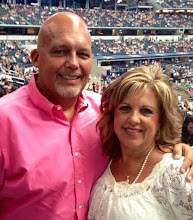32 years with my Proverbs 31 W0man!
Today we celebrate 32 years of marriage ... and it just keeps getting better!
Throughout this fall season, Laura and I have been teaching the Legacy Marriage material to a group of younger couples.
You may remember my definition of Legacy Marriage:
A Legacy Marriage is a marriage that is a blessing to us now,
and that will be a blessing to others for generations to come.
Our marriage has certainly been a blessing to us. And we sincerely hope that it is a blessing to others!
We will wrap up this session of Legacy Marriage next week. As I was reflecting on our marriage this morning and thinking about what we hope to be teaching and modeling, it occurred to me to ask and answer this question:
What have we learned in 32 years?
1. Marriage is not about me.
2. The main thing is to make your mate the main thing. Focus on meeting her needs. I call this the principle of reciprocity. If I focus on meeting Laura's needs, her response is to meet my needs. And she meets my needs in greater abundance than they would have been met if I had just been focusing on myself. I would like to take credit for this idea, but I can't. It is actually a biblical principle based on Philippians 2: 3-4:
Do nothing from selfishness or empty conceit, but with humility of mind regard one another as more important than yourselves; do not merely look out for your own personal interests, but also for the interests of others.
3. Its not my job to change my spouse. That's God's job. My job is to be the husband I am supposed to be - regardless of what she does or doesn't do.
4. The greatest inheritance a father can give his children is to love their mother.
Today we celebrate 32 years of Legacy Marriage.
I am looking forward to at least 32 more years!

